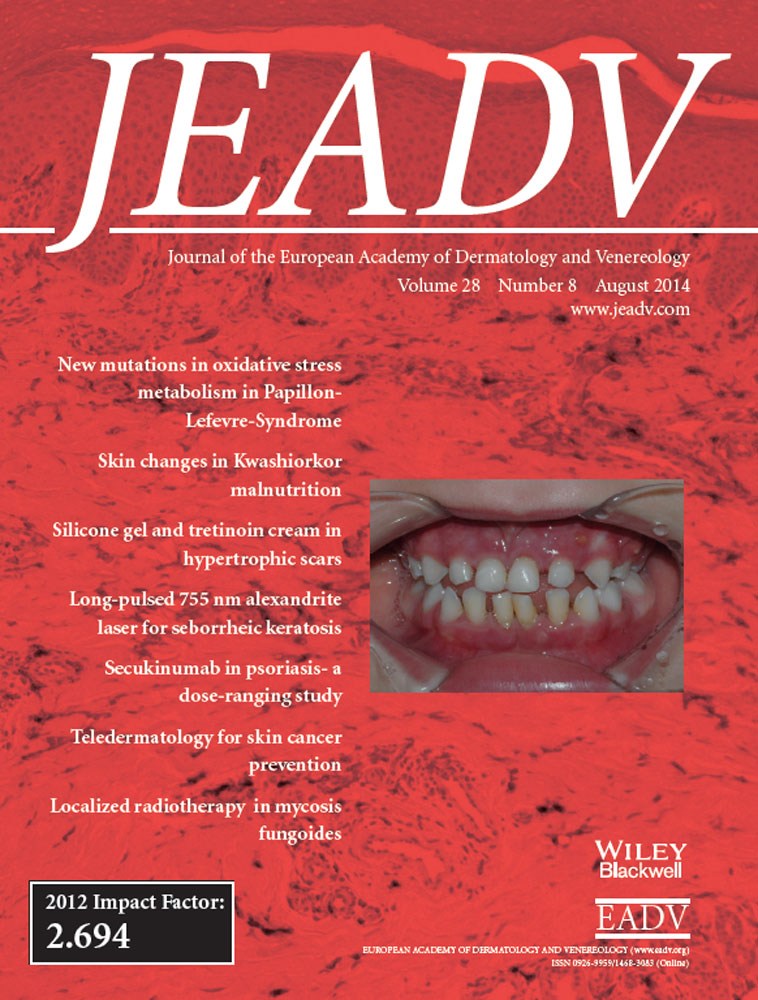Therapeutic efficacy of long-pulsed 755-nm alexandrite laser for seborrheic keratoses
Conflicts of interest
None declared.Funding sources
None declared.Abstract
Background
Both ablative and non-ablative laser devices have been used for the cosmetic treatment of seborrheic keratoses.
Objectives
We analysed treatment outcomes and adverse events in the treatment of seborrheic keratoses using a long-pulsed 755-nm alexandrite laser without colour enhancement.
Methods
A total of 216 seborrheic keratoses in 13 patients were treated with one or three sessions of long-pulsed 755-nm alexandrite laser at 1-month intervals. The lesions were treated with settings of 35 J/cm2 using a 6-mm spot size, a 3-ms pulse width, and 1-2 passes or until the appearance of fine bubbles on the irradiated lesions.
Results
A total of 216 seborrheic keratoses were treated with a mean 1.1 ± 0.4 sessions of long-pulsed 755-nm alexandrite laser and achieved a mean objective improvement score of 3.4 ± 0.7. Morphologic factors significantly impacted the number of treatment sessions required; in particular, papular lesions seemed to require more repetitive long-pulsed 755-nm alexandrite laser treatments than macular lesions. However, objective improvement score was not affected by the type of the seborrheic keratoses. The colour of seborrheic keratoses did not significantly affect the objective improvement score or required treatment sessions. Most of the lesions became crusted within a few days after the laser treatment and spontaneously peeled off within 7 days.
Conclusions
The delivery of long-pulsed, high fluence laser energy to seborrheic keratoses with protection of the epidermis by an integrated dynamic cooling device is an effective treatment with low risk of side-effects, even in light-coloured lesions with few target pigments.




